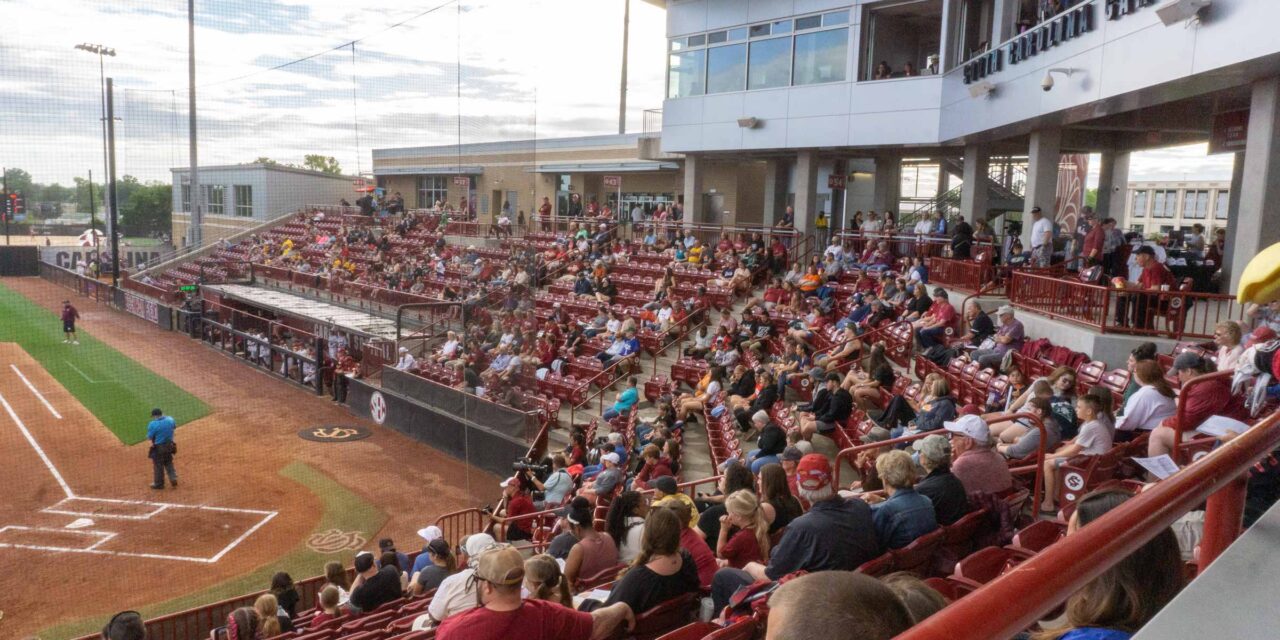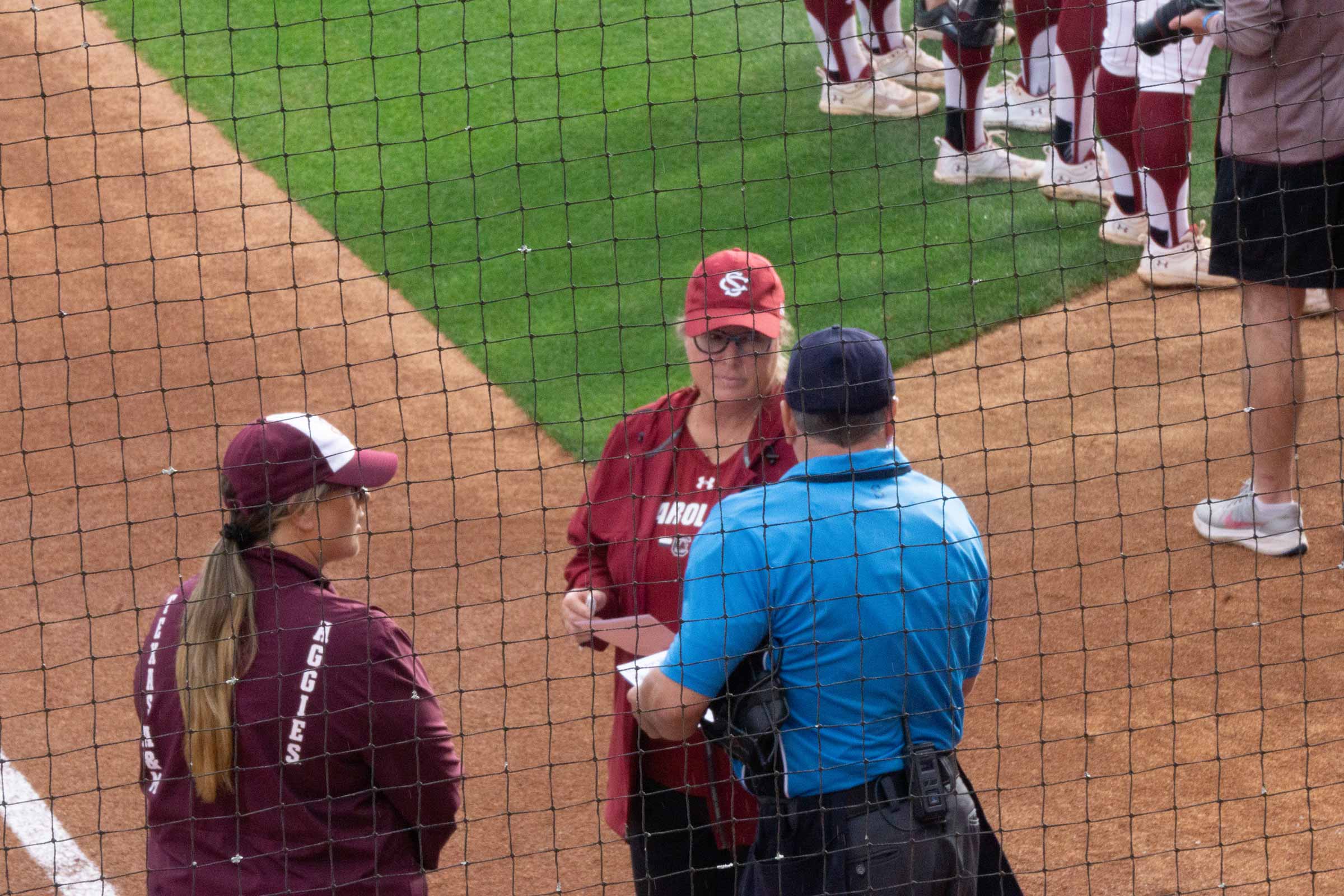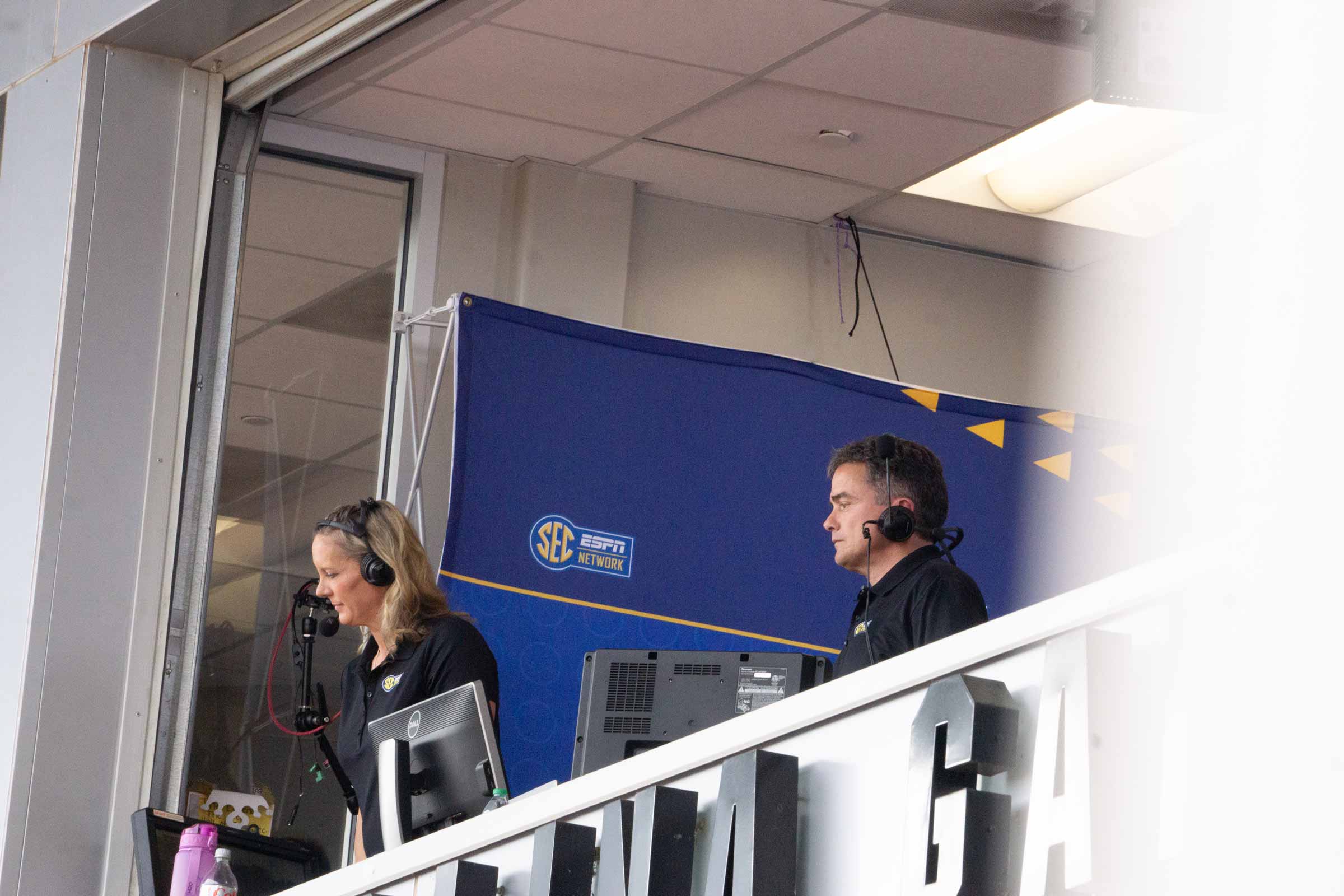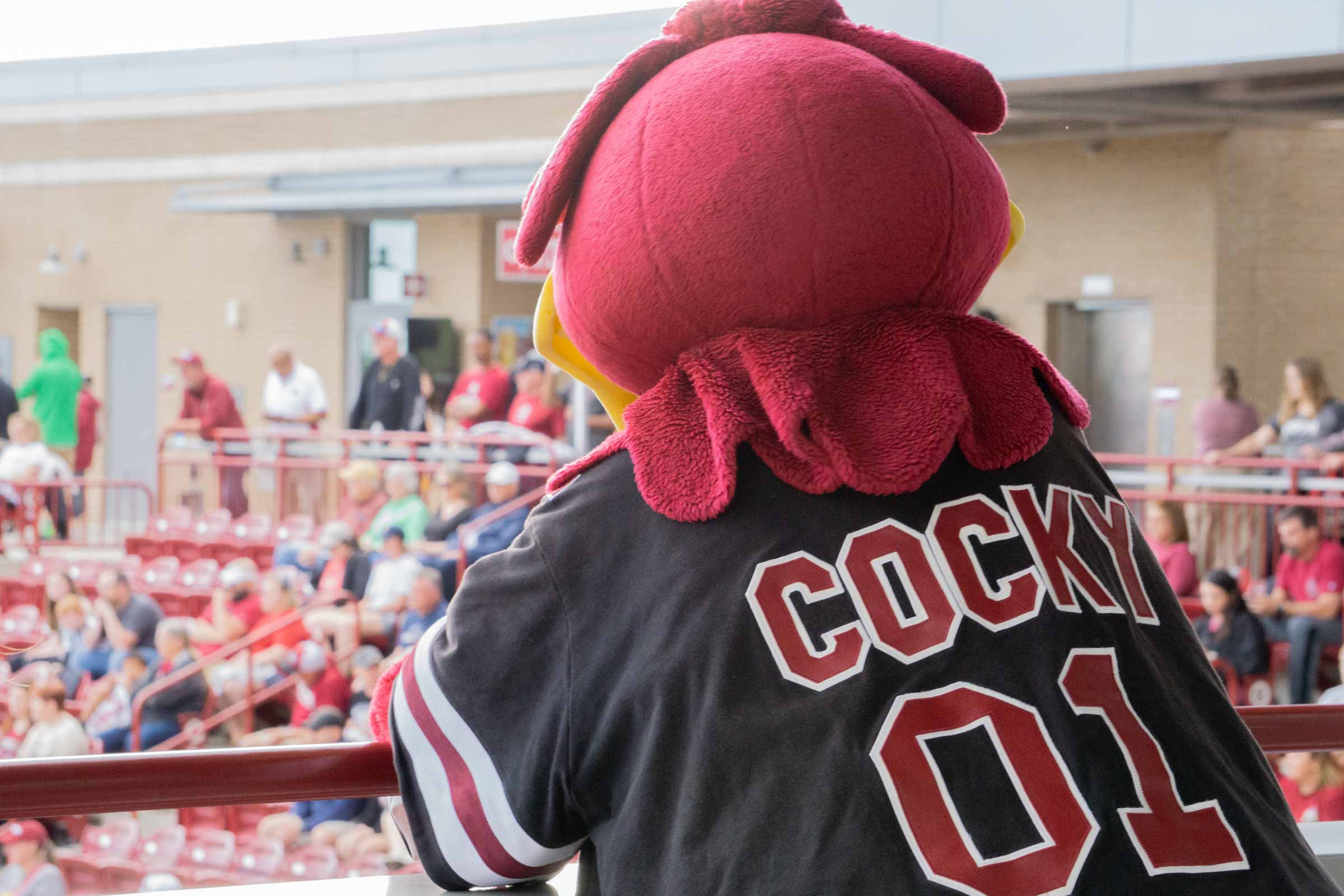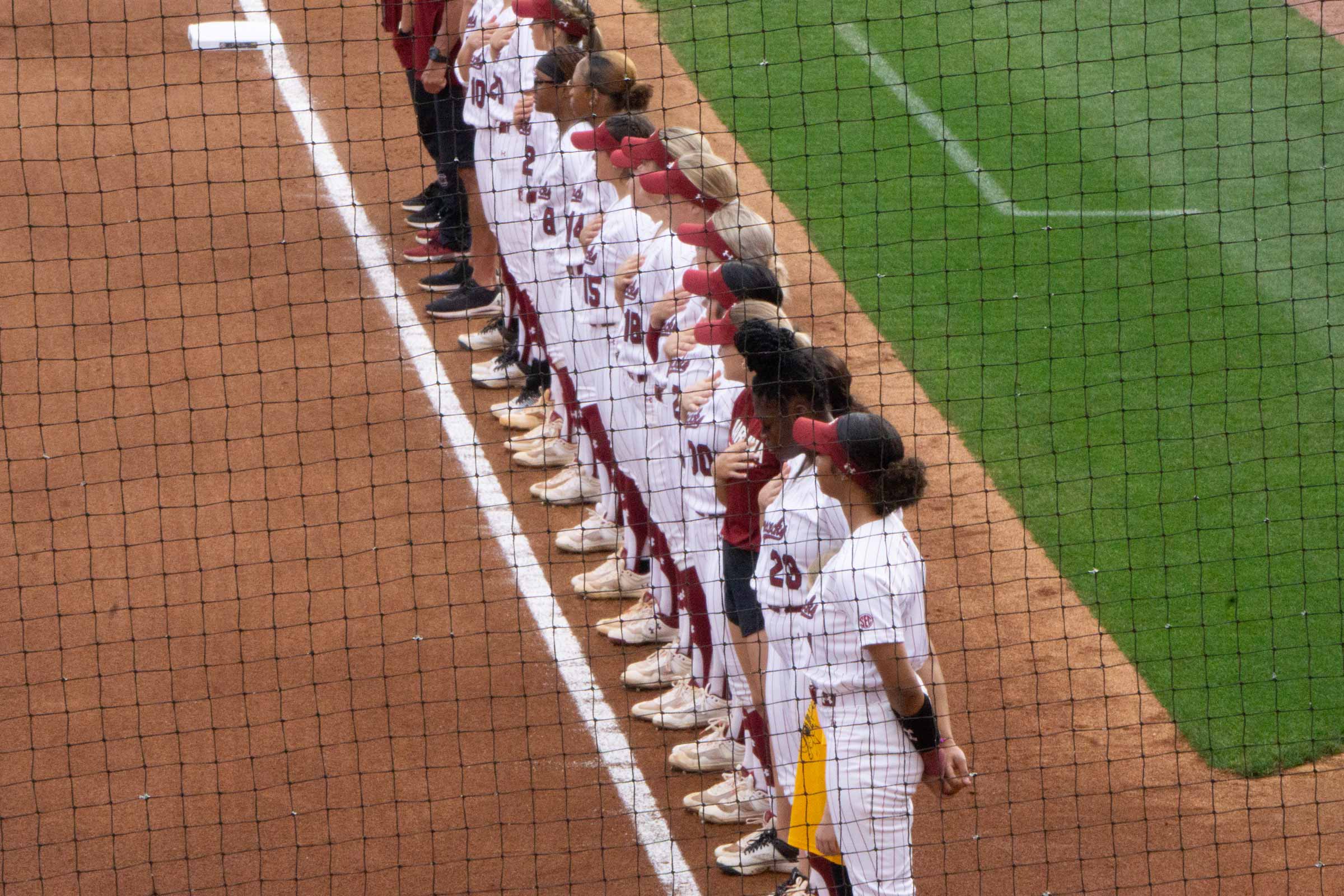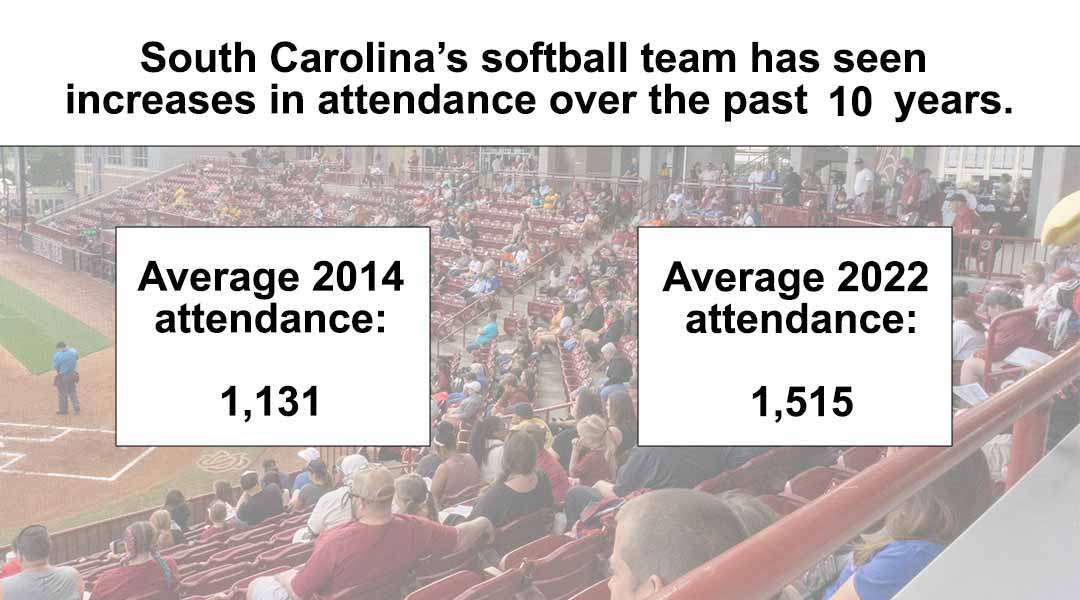Carolina Softball Stadium at Beckham Field during a game (Photos by Dylan Jackson)
Colonial Life Arena stood mostly empty in 2008 when Dawn Staley took control of the South Carolina Women’s Basketball program.
“There were hardly people coming to games,” said Brad Muller, who does play-by-play broadcasting for Gamecock Athletics. “There just wasn’t that much interest.”
Now Staley’s team can sell out games, as it did in February against the soon-to-be national champions Louisiana State University.
“I think we’re moving in the right direction,” said Staley of women’s basketball during a press conference prior to the 2023 Final Four semifinal games. “… It’s been building toward this for a long time.”
The NCAA Women’s Final Four semifinal games averaged 4.5 million television viewers, which is about 1.1 million more than during the 2022 semifinal games.
So money is one driver.
But it’s not just women’s basketball that has seen growth.
Softball has been on the rise, too
When Beverley Smith took over the Gamecock softball program in 2010, the 1,200-seat Gamecock Softball Stadium at Beckham Field did not exist.
“It was just bleachers with dugouts,” Smith told the Carolina News & Reporter. “Now we have a full stadium with concession stands, permanent restrooms for fans. .… We have a video board. The enhancement in facilities has been fantastic.”
South Carolina regularly ranks among the top NCAA softball teams in terms of attendance. Since 2014, the average number of fans at games has grown by almost 400, according to numbers posted by the NCAA.
“Every student athlete for every sport is working just as hard,” Muller said. “So it feels like it pays off a little bit more when you play in front of a huge crowd.”
Storylines bring the fans
Women’s basketball is growing for several reasons, including the storylines between different players, Staley during a March press conference.
“You have all of these incredible players creating incredible stories for our game,” Staley said, referring to South Carolina’s Aliyah Boston and Iowa’s Caitlin Clark. “… Any time that you’re able to talk about our game and two young women who have been storylines throughout the season, I think it’s great.”
The 2023 national championship game between LSU and Iowa was the most-watched college women’s basketball game on record, according to ESPN.
“It shows how much women’s basketball is evolving,” said former Gamecock guard Zia Cooke during the press conference.
The college women’s basketball final is a part of a television package of 20 NCAA championships that ESPN holds the rights to.
The NCAA commissioned an external gender equity review in 2021. The study found that annual broadcast rights for women’s basketball could be big money makers.
Predictions are that a new broadcasting deal could bring the NCAA $1.2 billion over the next 10 years.
“It used to be unheard of, other than maybe the Final Four, to have a women’s college basketball game in prime time,” Muller said. “Well, every night during the week, there’s a women’s college basketball game on somewhere. … I think that’s the biggest difference.”
Being accessible to fans who want to watch games is an important part of growth, Smith said.
“The media numbers, the TV numbers, show how popular the sport is,” Smith said. “The fact that so many people are watching on their phones and so many games are available online is the biggest thing.”
More people watching on television can mean more people wanting to attend in person. Smith said having a crowd support the team is important to her and the players.
“When you’re at home and you’ve got fans yelling at the umpires, you honestly feel the energy of the crowd,” Smith said. “… I think for our athletes, it’s just such great support and confirmation of all their hard work and everything they’ve been doing.”
Recruiting can be a different beast
The best women’s basketball players are now being recruited by a wider variety of schools, Muller said.
“It used to be that just one or two schools were getting all of the great talent,” Muller said. “Those two teams were going to meet in the championship, and everyone else was playing for third place. Now the talent is more distributed, and I think that makes it (the game) more marketable to audiences.”
Smith thinks the USC softball program also has its recruiting advantages.
“For us, the (Southeastern Conference) is a great brand of ball,” Smith said. “We use it in recruiting all the time. Athletes want to play in the SEC. We say if you want to be on the biggest stage, you are going to come play in the SEC.”
Student athletes are always the main focus for Smith, though.
“We ask a lot of our student athletes in terms of time and commitment and the discipline that it really takes to compete at this level,” Smith said. “I think the resources that they get in return are impressive. … We have everything in our stadium that a student athlete needs to be successful.”
What about the growth of professional leagues?
Women’s National Basketball Association expert Matt Ellentuck, too, thinks women’s professional sports is on the rise.
Ellentuck said the advantage that professional men’s sports leagues have had is that they have been around so much longer.
“They do have the luxury of being able to just have existing fan bases,” he said.
The WNBA was founded in 1996. Women’s Pro Fastpitch (softball) was created in 2004. And the National Women’s Soccer League was created only 11 years ago.
“To me, it’s the most obvious investment in sports in general,” Ellentuck said. “It’s hard for the leagues that are already huge to get a whole ton bigger. Women’s sports is just rising by word of mouth.”
USC Softball coach Bev Smith meets an opposing coach and umpire before a game.
Two fans watch a USC softball game.
Brad Muller, right, does play-by-play broadcasting for several of South Carolina’s athletics programs, including women’s basketball, softball and women’s soccer.
USC’s mascot, Cocky
USC’s softball team lines up for the national anthem.

